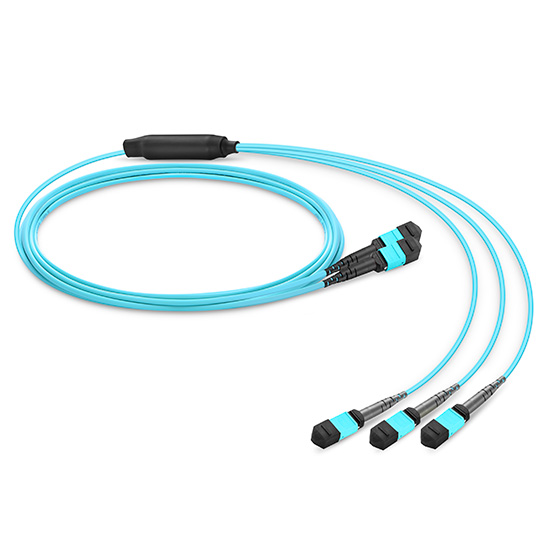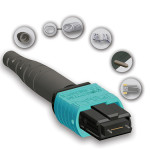SWDM is short for Short Wavelength Division Multiplexing. it offers users an alternate solution for 40Gbps, 100Gbps, and higher connectivity over duplex multimode fiber. Some of the many advantages of SWDM are:
Reach – up to 440m for 40G and 150m for 100G
40G SWDM can operate link distance up to 240, 350, and 440 meters on OM3, OM4, and OM5, respectively. These reaches are suited to the physical sizes of data centers originally designed for 10G and now upgrading to higher data rates.
Power Dissipation – As low as 1.5W
SWDM uses a 4x WDM optical architecture that matches the 4x electrical interface, and is therefore capable of lower power dissipation comparable to SR4 modules. For 40G, this means power dissipation as low as 1.5W per QSFP+ module is possible, and therefore SWDM QSFP+ modules can be readily inserted into system ports architected for standard 40G SR4. Other duplex solutions requiring higher power, sometimes up to 3.5W, may not be readily useable in system ports designed for lower power modules such as 40G SR4.
Ability to easily tap for network security appliances
SWDM has a simple Tx and Rx port, making it straightforward to tap using a simple optical power coupler for network security appliances.
Full DDM – including Tx power monitoring
All five digital diagnostics functions can be supported with SWDM: temperature, voltage, bias current, Rx power, and Tx power.
Operational and measurement simplicity – single Tx and Rx ports
Data center technicians are comfortable with individual Tx and Rx fibers. WDM is already a familiar concept in the data center. However, bi-directional solutions require technicians to connect together fibers where both sides are transmitting light, which is counter-intuitive. This complexity is not present in the SWDM solution. Additionally, SWDM solutions can use optical test equipment that runs at standard per-lane data rates.









